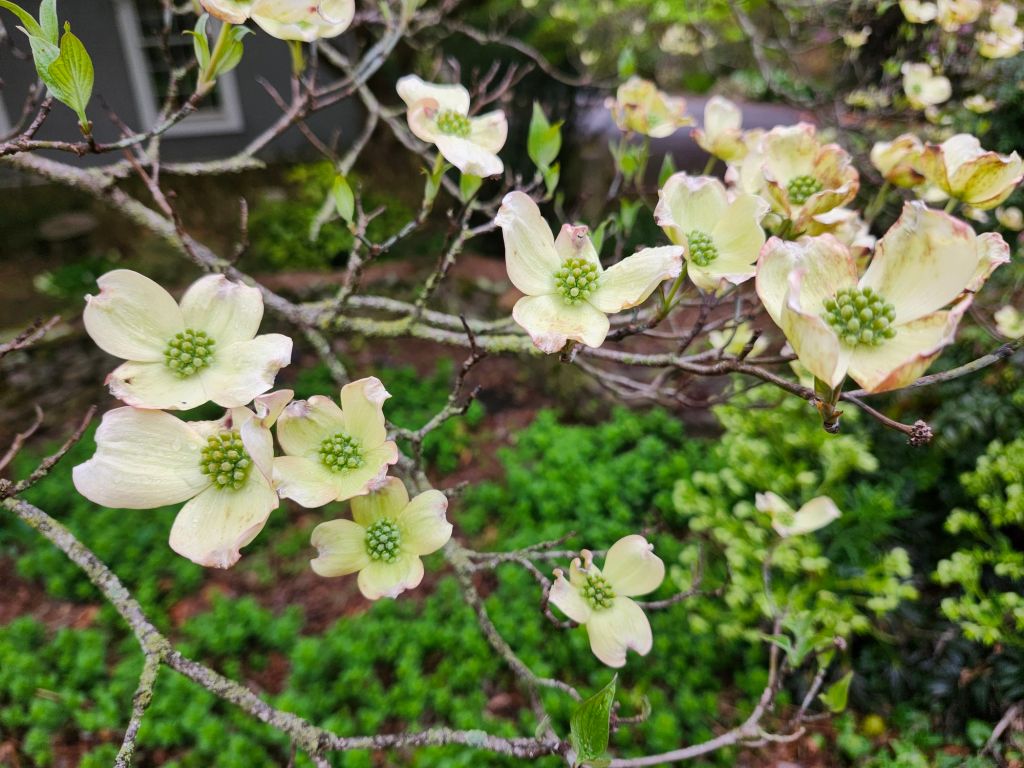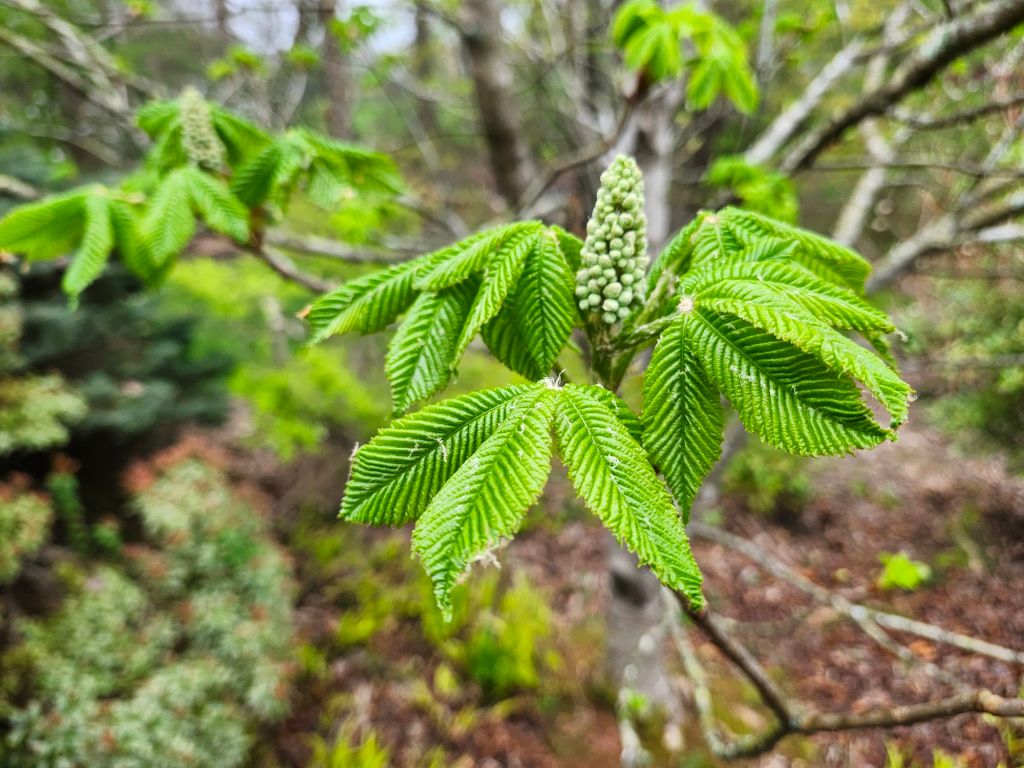Wood poppies (Stylophorum diphyllum, below) have seeded into open and not so open spaces in the dry, shaded side garden. I’m not quite certain when or where it was first planted, but it pops up everywhere without asking, though it stops as sunlight encroaches into this shaded space. Since it typically goes dormant by summer in this dry woodland setting, I don’t bother removing it when a clump grows in the middle of a barrenwort (Epimedium) or one of the spreading plum yews (Cephalotaxus prostrata). It’ll soon be gone. Until next year.

By this second week of April, there are adequate flowers to satisfy the gardener that spring has arrived, but he is also teased by signs of what’s next.
While flowers of redbuds (Cercis canadensis) are favorites, I confess that with a varied collection, it is the foliage that I most treasure. Several younger redbuds are slightly delayed in flowering, but the first to flower now displays its first small leaves, the leaves I am most anxious to see (below).

This is an unnamed redbud, a variegated mutation of the yellow leafed ‘Rising Sun’ that was discovered in the midst of a nursery grower’s field of otherwise yellow leafed trees. It is one of a kind, to my knowledge. Every spring, I am curious to see that it retains its variegation. So far, so good.
The other redbuds are red, yellow, or variegated in their foliage colors, and also, I’m curious to see the progression of a weeping, variegated leaf ‘Whitewater’. Planted a year ago, a fraction of its leaves were mottled, but I expect more this year with more established roots. I’ll know in just a few weeks.

The native dogwoods (Cornus florida, above) are a few days from their peak, right on schedule in mid-April in this garden. Flowers of the dogwood in the front garden, one that is annually afflicted by black spotting in summer, appear they will be cleaner than usual. The white blooms often are distressed, I assume a carryover from the spotted leaves to the flower buds. In any case, from twenty feet away, all look fine, but here begins the case to consider disease resistant hybrids and kousa dogwoods (Cornus kousa).

A trio in the genus Aesculus, two shruby buckeyes, and the tree horse chestnut, begin an interesting show before leaves are fully opened. Red buckeye (Aesculus pavia, above) is earliest to flower, but it is closely watched as soon as leaves emerge. Flowers of the white flowered bottlebrush buckeye (A. parviflora, below) are much later. I check periodically to see if ground hugging stems have rooted. Several have been potted and shared, with others soon to follow.

The best of the bunch to my eye is the red horse chestnut ( Aesculus x carnea, below). Its heavily corrugated emerging leaves are splendid with a flowering spike at every branch tip. The flowers are among the loveliest in the garden, but more on that when the time comes.
